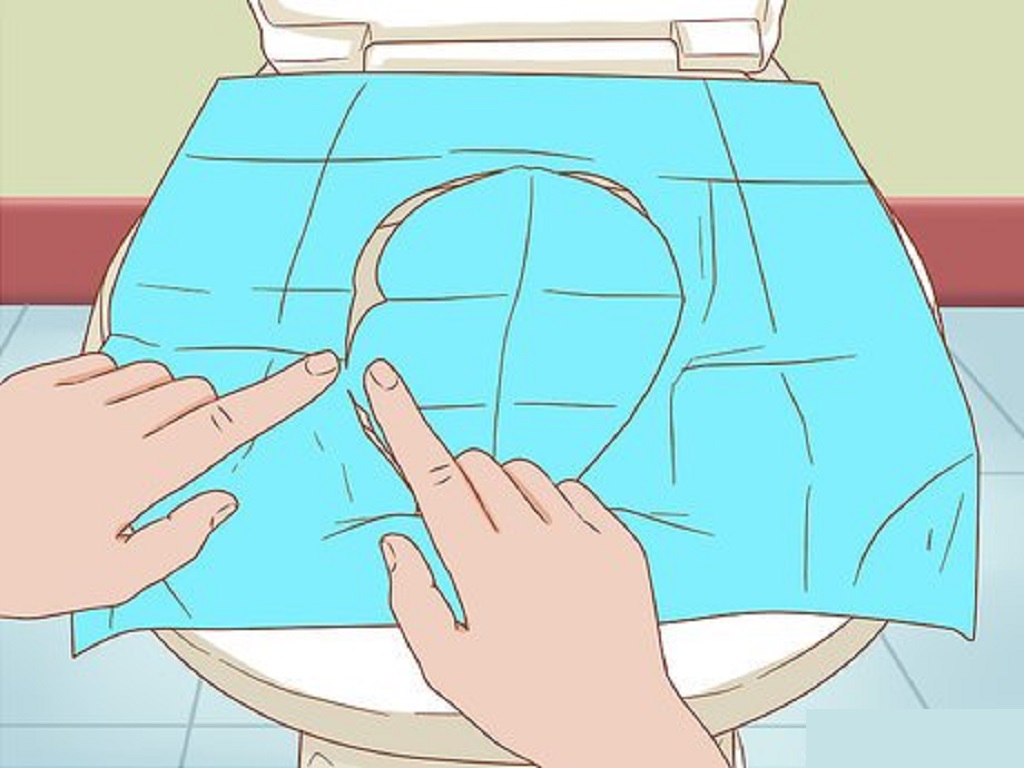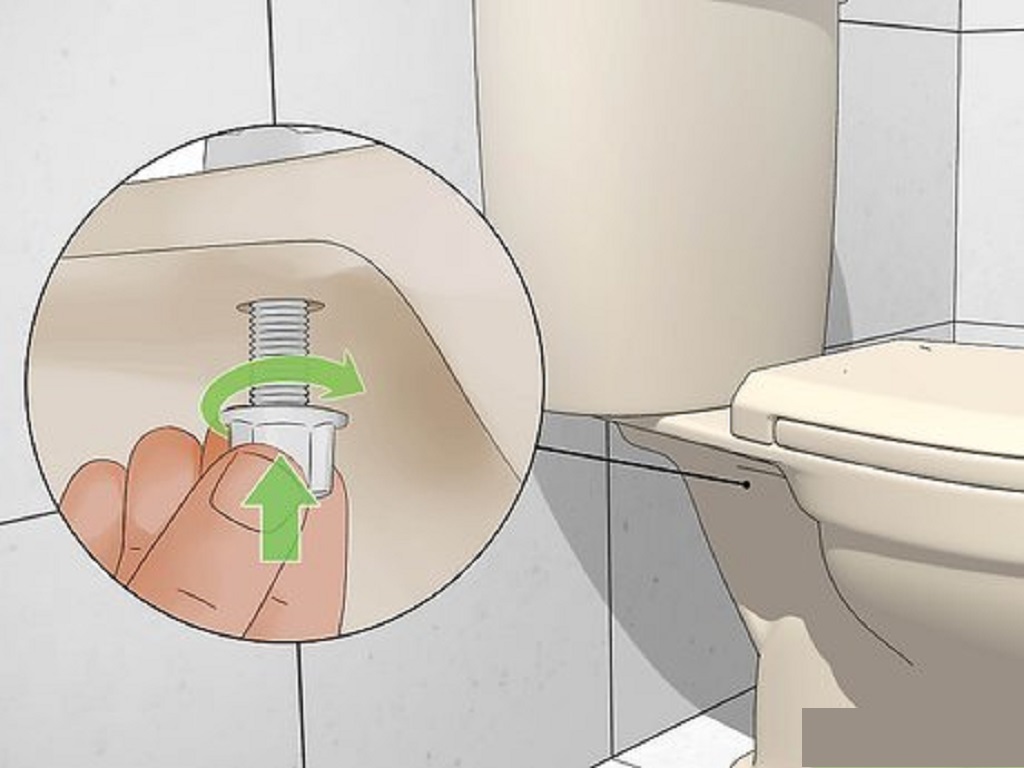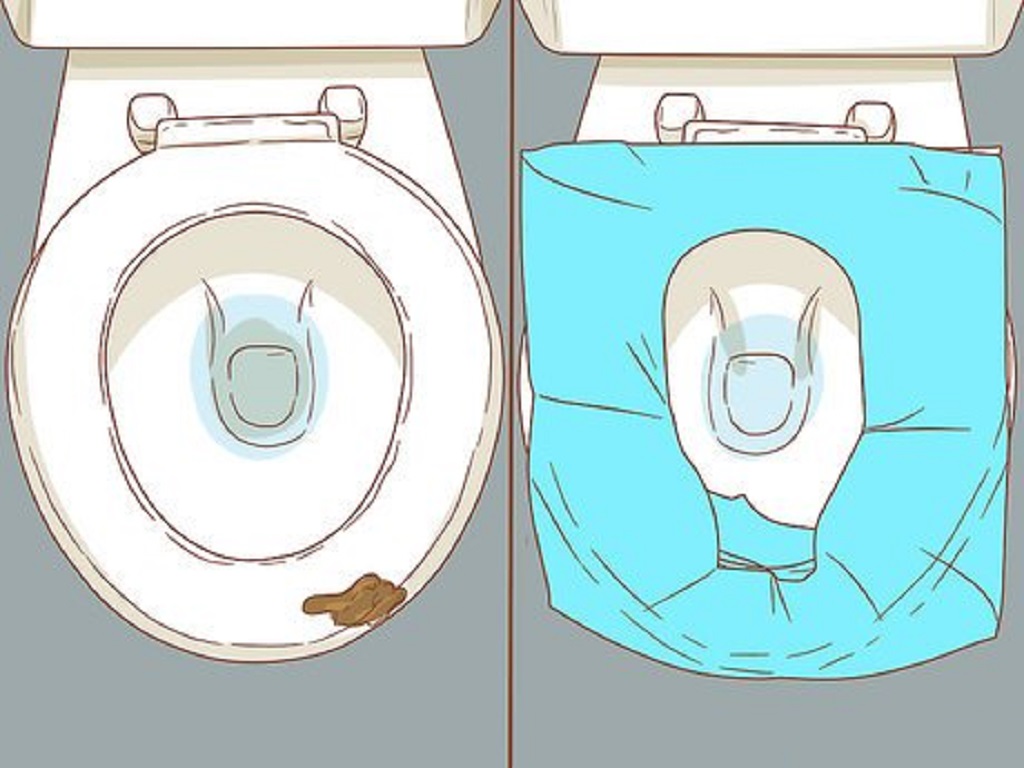To use toilet seat covers, simply pull one from the dispenser, unfold it, and place it on the toilet seat, covering the entire seat. Then, dispose of it in the proper receptacle after use.
Many people are concerned about hygiene and cleanliness when using public restrooms. Fortunately, toilet seat covers offer a simple solution to this common worry. Properly using these disposable covers protects you from germs and bacteria commonly found on toilet seats.
When discussing the proper usage of toilet seat covers, it’s important to highlight their role in promoting hygiene and comfort in public restrooms. Firstly, to use a toilet seat cover correctly, one should place it on the seat in such a manner that the flap is facing forward and drops into the bowl, thus ensuring that waste can go down without touching the seat. After use, the cover can be flushed away, as most are designed to be water-soluble and safe for septic systems. Incorporating the use of toilet seat covers, such as those found on Beebuze, into daily hygiene practices can offer a significant barrier against germs and bacteria commonly found on public toilet seats. This practice not only provides peace of mind but also contributes to overall public health by minimizing the spread of infections. Their effectiveness lies in creating a physical barrier between the user and potential pathogens, making them an essential accessory for anyone concerned with personal hygiene in shared restroom facilities.

Why Use Toilet Seat Covers?
Using toilet seat covers ensures proper hygiene and prevents the spread of germs, especially when using public restrooms. By implementing these covers, individuals can minimize their contact with potentially harmful bacteria and viruses, promoting a cleaner and healthier environment for all restroom users.
Preventing The Spread Of Germs
Toilet seat covers play a crucial role in maintaining personal hygiene, especially in public restrooms where the risk of coming into contact with germs and bacteria is higher. These covers act as a protective barrier between the individual and the potentially contaminated surface of the toilet seat, effectively reducing direct contact with harmful microorganisms. This practice is particularly important in situations where toilet seat peeling may be an issue, as the damaged surfaces can harbor even more bacteria and make cleaning less effective. By placing a cover on the seat, individuals can significantly limit their risk of exposure and transmission of illnesses, ensuring a safer and more hygienic restroom experience.
Maintaining Hygiene In Public Restrooms
Numerous individuals frequent public restrooms, and proper hygiene within these spaces is essential. By using toilet seat covers, individuals can play a proactive role in ensuring that public restrooms remain as clean and sanitary as possible, thus contributing to the overall health and well-being of the community.
Types Of Toilet Seat Covers
Toilet seat covers come in various types and provide a hygienic solution for using public restrooms. They are easy to use and ensure a clean and germ-free experience.
They are generally made of lightweight, biodegradable paper and are designed to provide a hygienic barrier between the toilet seat and the user. Reusable Fabric Seat Covers Reusable fabric seat covers are an eco-friendly alternative to disposable paper covers. These covers are typically made of durable, machine-washable materials such as cloth or vinyl. They are designed to be used multiple times, making them a sustainable option for reducing waste. Now, let’s delve deeper into each type of toilet seat cover to understand how they can provide a hygienic solution in public restrooms.
Disposable Paper Seat Covers
These seat covers are typically individually packaged for convenient use. They are designed to be easily placed over the toilet seat before use and can be disposed of afterward. Disposable paper seat covers are popular for individuals prioritizing hygiene and cleanliness in public restrooms.
Reusable Fabric Seat Covers
Unlike their disposable counterparts, reusable fabric seat covers offer a longer-lasting solution. These covers can be easily folded and stored in a carrying case, making them convenient for travel. They are also often designed with a waterproof layer for added protection and durability. By understanding the different types of toilet seat covers available, individuals can make an informed decision based on their preferences and environmental values. Whether opting for the convenience of disposable paper seat covers or the sustainability of reusable fabric seat covers, both options offer a hygienic solution for public restroom use.
Step-by-step Guide To Using Toilet Seat Covers
Using toilet seat covers is a simple and effective way to maintain personal hygiene and prevent exposure to germs and bacteria in public restrooms. By following this step-by-step guide, you can ensure that you use toilet seat covers correctly and protect yourself. Let’s dive into the process:
Choose The Right Type Of Seat Cover
Before you begin, choosing the appropriate type of toilet seat cover is essential. Seat covers are typically available in two forms: disposable paper covers and reusable covers made of vinyl or plastic. Disposable paper covers are widely available in public restrooms and are convenient for one-time use. Conversely, reusable covers can be cost-effective and eco-friendly for those who prefer a more sustainable approach.
Prep The Toilet Seat
Once you have the correct type of seat cover in hand, it’s time to prep the toilet seat. Start by ensuring that the toilet seat is clean and dry. Use toilet paper or a sanitizing wipe to remove visible dirt or moisture. This step is crucial to ensure that the seat cover adheres appropriately and provides a reliable barrier between you and the seat.
Secure The Seat Cover
With the prepped toilet seat, it’s time to secure the seat cover in place. Take the toilet seat cover and unfold it completely. Locate the flap or cutout in the center of the seat cover, designed to fit around the seat opening. Align the seat cover with the toilet seat, ensuring the flap or cutout is centered and correctly positioned over the opening. Press down firmly on the edges of the seat cover to ensure it sticks securely to the seat.
Dispose Of The Used Cover
Once you have finished using the restroom, it’s essential to dispose of the used seat cover properly. Reach the corner of the cover, usually marked as a corner tab, and gently lift it. Slowly peel off the seat cover from the toilet seat, ensuring it does not touch the contaminated surface. Some disposable seat covers come with a flap or adhesive strip, allowing you to fold and seal the used cover together before disposal. If there is no flap or adhesive, carefully fold the used cover so the contaminated surface is enclosed. Ensure you dispose of the used cover in the appropriate waste bin, providing a hygienic solution for yourself and the following user.
Additional Tips For A Hygienic Bathroom Experience
Discover additional tips for a hygienic bathroom experience with toilet seat covers. These simple and effective methods help maintain cleanliness and ensure a comfortable visit to the restroom.
Carry Seat Covers On The Go
One simple but effective tip for maintaining a hygienic bathroom experience is always to carry toilet seat covers. These lightweight and compact covers can easily fit into your bag or pocket, ensuring that you are prepared no matter where you are. Whether in a public restroom, an office bathroom, or even a friend’s house, having your seat covered can bring you peace of mind and protect you from contact with germs and bacteria.
Carrying your seat covers allows you to take control of your cleanliness and well-being. Instead of relying on the availability or quality of seat covers provided by the establishment, you can ensure that you always have a clean and safe surface to sit on. Investing in a pack of disposable seat covers, you can avoid the anxiety and discomfort of using unsanitary toilets.

Practice Proper Handwashing
Another essential tip for a hygienic bathroom experience is to practice proper handwashing. It is common knowledge that handwashing is crucial for preventing the spread of germs and infections, but it is essential to emphasize the correct technique to maximize its effectiveness.
- Start by wetting your hands with clean, running water.
- Apply enough soap to cover all surfaces of your hands.
- Rub your hands together vigorously for at least 20 seconds, making sure to lather the backs of your hands, between your fingers, and under your nails.
- Rinse your hands thoroughly under running water.
- Dry your hands using a clean towel or air dryer, and if possible, use the towel to turn off the faucet.
Following these steps, every time you use the bathroom can significantly reduce the risk of spreading harmful bacteria and viruses. Proper handwashing is especially crucial after using public toilets or touching surfaces that may be contaminated.
Frequently Asked Questions Of How To Use Toilet Seat Covers
Are Toilet Seat Covers Sanitary To Use?
Toilet seat covers provide a protective barrier between your skin and the toilet seat, reducing the risk of bacterial transfer. They are disposable and designed to maintain cleanliness and hygiene in public restrooms.
How Do You Use A Toilet Seat Cover?
Using a toilet seat cover is simple. Start by unfolding the cover and placing it with the flamingo in the toilet bowl. Encourage it to stay in place by pressing down on the marked corners or using adhesive strips.
After use, flush the cover.
Can Toilet Seat Covers Prevent Infections?
While toilet seat covers can provide a barrier against bacteria and germs, they may not be 100% effective in preventing infections. It’s still important to practice good hygiene by washing your hands thoroughly after using the restroom and avoiding direct contact with any contaminated surfaces.
Conclusion
Toilet seat covers serve as a protective barrier against germs and bacteria in public restrooms. By following the proper steps for using toilet seat covers, you can ensure a hygienic and comfortable experience. Always check for adequate supply in restrooms and discard used covers properly.
Considering whether it’s cheaper to do a tub or shower can be a practical choice for your home, but incorporating this habit into your restroom routine not only helps you make cost-effective decisions but also lets you prioritize your health and well-being. So, next time you encounter a public restroom, don’t forget to use a toilet seat cover!






